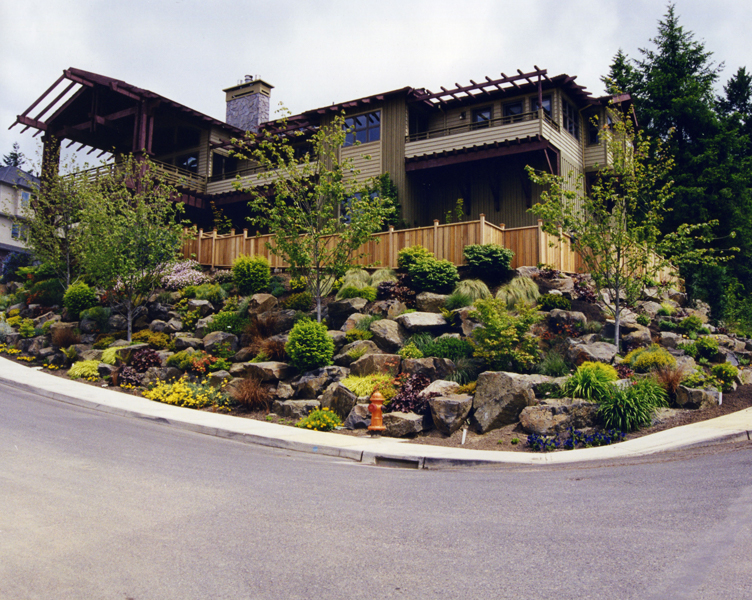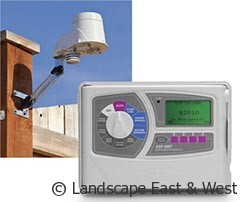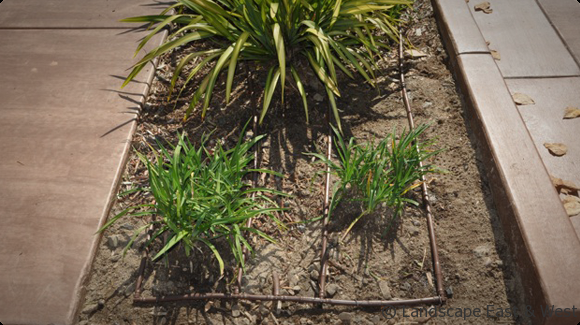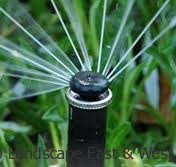Is Your Inefficient Irrigation System Dripping Dollars Down The Drain? Read These Tips To Find Out..
 Drips equal dollars. When you have the right irrigation system you can be sure you’re providing the most efficient and cost-effective watering system possible. Experienced landscapers know to take soil type, topography, and specific plant needs into consideration when designing a custom irrigation system. And delivering water directly to plants means less water is lost to evaporation. With the right setup, you can expect to see 40% operation savings over the lifetime of your irrigation system. Consumers who invest in the right system up front are able to achieve significant savings in the long run. Read our tips below to learn more about designing water-efficient irrigation systems.
Drips equal dollars. When you have the right irrigation system you can be sure you’re providing the most efficient and cost-effective watering system possible. Experienced landscapers know to take soil type, topography, and specific plant needs into consideration when designing a custom irrigation system. And delivering water directly to plants means less water is lost to evaporation. With the right setup, you can expect to see 40% operation savings over the lifetime of your irrigation system. Consumers who invest in the right system up front are able to achieve significant savings in the long run. Read our tips below to learn more about designing water-efficient irrigation systems.
Tip#1: Work with a Certified Irrigation Auditor
Landscape East & West irrigation technicians are Irrigation Auditors, meaning they have earned certification through the Irrigation Association, an industry membership organization focused on promoting efficient, sustainable irrigation. For the consumer, Irrigation Association certification signifies that your irrigation expert is up to speed on the latest methods to keep landscapes lush without wasting water.
Our Irrigation Auditors consider a range of factors when designing and setting up automatic systems, including:
- The relationship between water and soil—how soil composition impacts absorption rates, etc.
- Incorporating an electric timer so you never have to wonder if your plants have been watered.
- Geography’s role in proper irrigation. For instance, if you live on a sloped lot, our Irrigation Auditor understand how to design a system that will deliver enough water to every part of your landscape.
Tip #2: Invest in a SMART Controller
 A SMART Irrigation Controller is a sophisticated landscaping device that automatically adjusts water levels and times according to environmental conditions. Think of a SMART controller as the brain of an irrigation system. Older irrigation systems are “brainless” in that they turn on at the same time and deliver the same amount of water each day, even during a heavy rainfall. In contrast, SMART Irrigation Controllers collect information about rainfall and other weather conditions on site, and adjust water output accordingly. Installing a SMART irrigation controller is a major step forward in irrigation system optimization.
A SMART Irrigation Controller is a sophisticated landscaping device that automatically adjusts water levels and times according to environmental conditions. Think of a SMART controller as the brain of an irrigation system. Older irrigation systems are “brainless” in that they turn on at the same time and deliver the same amount of water each day, even during a heavy rainfall. In contrast, SMART Irrigation Controllers collect information about rainfall and other weather conditions on site, and adjust water output accordingly. Installing a SMART irrigation controller is a major step forward in irrigation system optimization.
Overall, SMART Irrigation Controllers reduce outdoor water use
by an average of 15 to 30 percent
Tip #3: Consider Water Pressure
It’s important for Irrigation Auditors to factor water pressure into their irrigation calculations. The pressure of your city water line will vary according to your location, as well as other factors. For instance, if you live on top of a hill, the water pressure may be very high in order to move water to your elevation. In this case the water coming out of your sprinklers would be highly pressurized.
Isn’t higher water pressure a good thing? Yes, we all love a strong shower with 60-70 PSI. However, for landscaping irrigation, it’s best to have a PSI of about 30. When irrigation water pressure is higher than 30 PSI, the water is ejected too quickly, resulting in smaller droplets. This is not ideal because the wind and sun can more easily blow away or evaporate small drops. Larger water globules are preferable, since they will be less likely to be wasted to environmental factors.
Landscape East & West Irrigation Auditors use pressure-compensating heads as well as regulating valves to control water pressure. Dialing down the pressure to the ideal amount means saving money on your water bill.
Tip #4: Install Drip Irrigation Systems
They’re subtle, but effective! Drip irrigation systems are less flashy than setups with spray heads, but they tend to be more effective. Rather than spraying water all over the place, drip systems deliver water directly to plants’ base. The drip lines are situated above the soil level but below mulch material, such as bark chips or compost. As water flows through drip lines, it percolates down to plants’ roots. Because the lines are covered, drip irrigation systems minimize evaporation-driven water waste.

Drip irrigation systems are also extremely versatile. They can be used to deliver even watering over a certain area, if that’s what you’re looking for. Or, drip lines can be configured to deliver different amounts of water to different areas, according to the season. For instance, a properly designed tree drip line would have different settings than irrigation for a flowerbed. Tree roots extend deeper into the soil, so they require irrigation that reaches deeper into the soil as well. We can create a separate valve for the drip system that can be conveniently controlled via a timer.
If you like to see a visual that ensures your system is working, we can install drip line indicators that rise when the irrigation system is pressurized. These indicators are micro-spray heads that don’t actually spray water; they just elevate to let you monitor system function.
Tip #5: Adjust Watering According to Plant Needs
Not all plants require the same amount of water. When individual plants in shared beds have unique watering needs, our Irrigation Auditors set up a point of source arrangement where each plant receives its own water line. In this way, our irrigation experts can design a custom arrangement specific to your landscaping. Our Portland area green thumbs appreciate this sort of attention to detail.
Tip #6: Select the Right Nozzle
 Sure, nozzle choice may seem like a minor detail, but it’s actually quite influential on your irrigation system’s efficiency. For example, here in Portland we tend to have soils with high clay content. Such soils act like a sponge, soaking up water quickly. When the soil is fully saturated and no more water can be absorbed, there’s no purpose distributing more water—it will just flow away and be wasted. Because spray nozzles put out large amounts of water very quickly they’re less than ideal for clay-heavy soils. In Portland, spray nozzles tend to over-saturate the soil and wastewater. For clay-ridden soils and sloped landscaping, we recommend multi-spray rotating nozzles, which slow down water distribution for improved soil absorption.
Sure, nozzle choice may seem like a minor detail, but it’s actually quite influential on your irrigation system’s efficiency. For example, here in Portland we tend to have soils with high clay content. Such soils act like a sponge, soaking up water quickly. When the soil is fully saturated and no more water can be absorbed, there’s no purpose distributing more water—it will just flow away and be wasted. Because spray nozzles put out large amounts of water very quickly they’re less than ideal for clay-heavy soils. In Portland, spray nozzles tend to over-saturate the soil and wastewater. For clay-ridden soils and sloped landscaping, we recommend multi-spray rotating nozzles, which slow down water distribution for improved soil absorption.
Water is always the most expensive part of an irrigation system. For this reason, it makes good sense to ensure your irrigation system is wasting as little water as possible. With a Landscape East & West irrigation auditor on your side, you’ll understand which nozzles, lines, and arrangements will best suit your yard, resulting in significant long-term savings on water bills. Keeping systems properly maintained is critical to ensure ongoing efficiency, since any break in your irrigation line will inevitably wastewater.
Landscape East & West offers a five-year warranty on irrigation systems we install. Call us to learn more about our expert installation, irrigation system maintenance programs, and equipment repair services.
